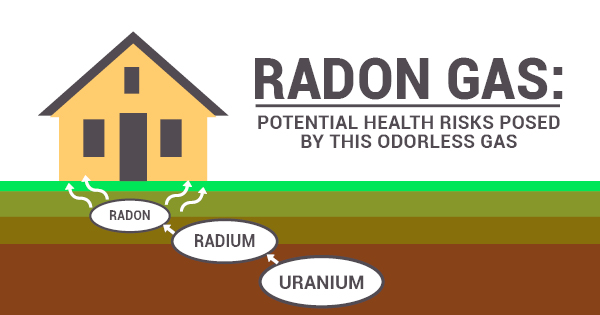United States EPA
Is radon really bad for you?
Breathing radon over time increases your risk of lung cancer. Radon is the second leading cause of lung cancer in the United States. Nationally, the EPA estimates that about 21,000 people die each year from radon-related lung cancer. Only smoking causes more lung cancer deaths.

The USA EPA has developed the radon level of 4.0 picocuries per liter to be the activity degree for radon gas in residences. Significance, take action to minimize radon levels that are more than four picocuries per liter. Bear in mind that radon threat complies with a linear contour of the amount vs the moment revealed to it plus the extra aspect that each individual may be more or less http://stephenhduq991.lucialpiazzale.com/protect-yourself-and-also-your-household-from-radon prone to radon related cancer.
As a result of such researches, Cohen and others have wrapped up that those staying in homes with radon levels as much as 4.0 pCi/ l have a lower than typical chance of having lung cancer. While no degree of radon gas is completely safe, just like most points in life we need to stabilize the benefits and expenses to find our very own" appropriate" degrees.
Is radon mitigation really necessary?
When radon gas enters the body, it exposes the lungs to small amounts of radiation. In small quantities, experts say this is harmless. However, in persistent exposures or larger quantities, radon can damage the cells of the lining of the lungs, increasing a person's chance of developing lung cancer.
It can additionally be released from constructing materials or via water stemming from radon-contaminated wells, according to the National Institutes of Health (NIH). Radon levels can be higher in homes as well as structures that are well-insulated, tightly sealed or improved dirt rich in the contaminated elements uranium, radium as well as thorium.
- Your danger of lung cancer cells increases substantially with exposure to greater radon degrees.
- Lung cancer danger increases 16% per 2.7 pCi/L increase in radon direct exposure.
- Radon gas is a naturally-occurring by-product of the contaminated degeneration of Uranium in the dirt.
- Depending on your geographical area, the radon degrees of the air you take a breath beyond your home may be as high as 0.75 pCi/L.
- The US EPA has actually put it simply, stating, "Any kind of radon exposure has some risk of triggering lung cancer.
How do you eliminate radon?
Possible symptoms include shortness of breath (difficulty breathing), a new or worsening cough, pain or tightness in the chest, hoarseness, or trouble swallowing. If you smoke and you know you've been exposed to high levels of radon, it's very important to quit smoking.
January is National Radon Action month as well as the Environmental Protection Agency is asking house owners to "conserve a life" by testing for radon and also repairing any problems they discover. Radon is a radioactive gas as well as direct exposure to it triggers 21,000 lung cancer cells fatalities per year-- just smoking creates extra. Due to the fact that you can't see, scent or taste radon, it is necessary to periodically test the air in your home.

Believing you live in an area not impacted by radon is just one of the myths regarding this lethal gas. We examined all material pertaining to radon on state government Internet site using a standard information collection kind.
How long does it take for radon to cause cancer?
Fact: You will reduce your risk of lung cancer when you reduce radon levels, even if you've lived with an elevated radon level for a long time. Keep in mind that radon levels below 4 pCi/L still pose some risk and that radon levels can be reduced to 2 pCi/L or below in most homes.